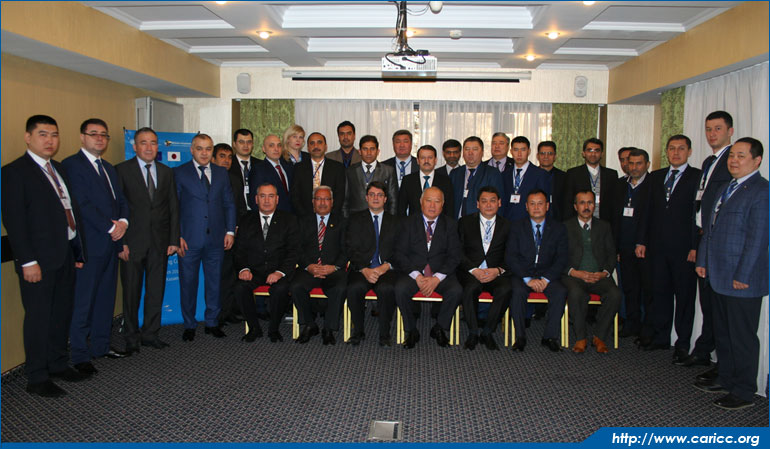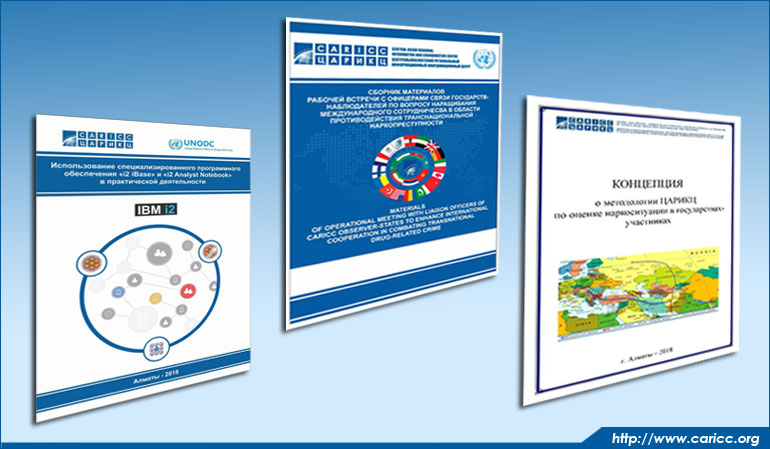One of the tasks that member states of the Collective Security Treaty Organization (CSTO), which unites Armenia, Belarus, Kazakhstan, Kyrgyzstan, Russia and Tajikistan, set for itself, is to conduct special operations to combat transnational drug crime.
To organize an effective opposition to this drug threat, it is necessary to more deeply uncover its causal relationships.
We have to admit that it was precisely the instability and armed confrontation of the last years that created in distressful Afghanistan ideal conditions for an unprecedented scale of drug production.
According to the United Nations Office on Drugs and Crime (UNODC), in 2016-2017 alone, global opium production increased by 65% and amounted to 10,500 tons. Of this volume, the “lion’s share” of opioid products (9,000 tons) was registered in Afghan provinces.
At the same time, 99% of all opium poppy is cultivated in precisely those areas where the vast majority of clashes occur. Thus, the conclusion is obvious that the main cause of global Afghan drug production is the ongoing geopolitical tensions in Afghanistan caused by growing rejection from the population, especially Pashtun tribes, the presence of more than 100 thousand foreign troops in this long-suffering country, inevitably giving rise to many hotbeds of resistance and military microconflicts.
The perennial confrontation makes it impossible for the population to survive on traditional agricultural production, forcing peasants to grow unpretentious opium poppy demanded by international criminal groups. That is why Russian and foreign analysts agree that eradication of the drug economy in Afghanistan is possible only when main part of peasants switch to cultivating useful crops, which, unlike the opium poppy, imperatively requires a peaceful life as a condition for more expensive and time-consuming labor, functioning irrigation systems, developed infrastructure and systems for processing, storage, transportation and sales of products, i.e. ultimately ending armed confrontation.
Despite a slight reduction in drug production in Afghanistan in 2018 caused by drought, there are enormous stocks of opiates produced in previous years in its territory.
Smuggling of opiates from Afghanistan to countries of the Central Asia, Russia, Western Europe, the USA and Canada along the so-called “northern route” has acquired a wide and stable nature. This undermines demographic potential, delays resources to counter drug crime, treat, rehabilitate and re-socialize people who allow non-medical drug use. According to expert estimates, around 25-30% of Afghan opiates are distributed to drug users through this channel.
In addition, organizers of drug trafficking are increasing drug smuggling along the Caucasian-Black Sea branch of the “Balkan route”, which also directly affects the anti-drug security of the CSTO states.
Actualization of anti-drug measures of states parties to the Collective Security Treaty began from the moment this document was signed in 1992. Even then, the CSTO states agreed that the Afghan drug threat has a pronounced regional character. However, a real breakthrough in the field of practical fight against illicit drug trafficking within the CSTO occurred only ten years later, when a package of relevant decisions was adopted at the session of the Collective Security Council (CSC) held on April 28, 2003 in Dushanbe.
The Organization was tasked with strengthening foreign policy integration and expanding areas of counteraction against international terrorism, extremism, organized transnational crime, illegal migration and drug business. The Council made a separate decision on coordination of activities in the anti-drug sector, in accordance with which an Action Plan was developed to combat external drug threat.
Under this plan, a comprehensive operational and preventive operation under the code name “Channel-2003” was carried out for the first time in 2003, aimed at identifying and blocking routes of illegal drug trafficking in the regions directly adjacent to Afghanistan. An international coordination headquarters was established to guide and manage the operation, consisting of representatives of competent authorities of the six CSTO states, national and regional interdepartmental headquarters, operational groups of relevant ministries and departments of the CSTO member states. Competent agencies of Iran, China, Uzbekistan, Ukraine and Turkmenistan were also informed about preparation of the operation, its main tasks, ways of solving them and timing of the operation.
The effectiveness of the operation carried out in 2003 was recognized as successful, and the United Nations International Narcotics Control Board subsequently recognized it as the largest and most effective in countering Afghan drug trafficking.
Considering effectiveness of annual coordinated activities of the CSTO member states, other countries expressed their readiness to join the “Channel” operation. Including observers from Azerbaijan, Afghanistan, Bulgaria, Bolivia, Venezuela, Iran, Spain, Italy, China, Colombia, Latvia, Lithuania, Mongolia, Nicaragua, Pakistan, Poland, Peru, Romania, USA, Turkey, Turkmenistan, Ukraine, Finland, Estonia as well as representatives of Interpol, the OSCE and the Eurasian Group on combating money laundering (EAG).
Having regard to the obvious progress that accompanied the conduct of the “Channel”, this annual operation was given a status of a permanent CSTO regional anti-drug operation (decision of the Heads of the CSTO member states of September 5, 2008).
In total, from 2003 to the present, 28 stages of Operation “Channel” have been conducted. As a result of these activities, law enforcement agencies of the CSTO member states and observers seized 373 tons of narcotic drugs, psychotropic and potent substances, including 16.5 tons of heroin, 55.5 tons of hashish and 6.5 tons of synthetic drugs.
The fact that the Channel every year becomes an increasingly effective tool in combating drug epidemics in entire regions of Eurasia is shown by the results of a regular stage of the international special anti-drug operation “Channel Red Barkhan”, which took place from September 10 to September 14 year on the territory of Kazakhstan. Its planning was carried out on the basis of results of preparatory phase, during which an analysis of operational situation was conducted, a set of operational search measures were developed aimed at identifying and blocking channels for smuggling of narcotic drugs and psychotropic substances, in particular, through the territory of the Republic of Kazakhstan, and exchange of necessary information between interacting authorities was also conducted.
During the operation, special measures were taken to identify habitats of wild-growing drug-containing plants, including “Indian cannabis”.
As a result of coordinated actions of law enforcement bodies of the participating countries, more than 11 tons 132 kg of drugs were seized, of which 6 tons 533 kg of opium, 930 kg of hashish, 1 ton 137 kg of marijuana, 88 kg of heroin, 144 kg of synthetic drugs, 2 tons 262 kg of other species, including 1 ton 663 kg of morphine and more than 33 kg of psychotropic and potent substances.
Representatives of law enforcement agencies of Iran and China as well as representatives of international organizations such as the OSCE, EAG, UNODC, Interpol, the Central Asian Regional Information Coordination Centre for Combating Illicit Trafficking of Narcotic Drugs, Psychotropic Substances and their Precursors (CARICC), Central Asia Drug Action Programme (CADAP) took part in the operation “Channel Red Barkhan” as observers.
All this demonstrates broad international recognition of the effectiveness of the CSTO efforts in countering global threat of drugs and indicates high professionalism of structures and special services of the states constantly tackling this most serious challenge to their national security.
Protection must be collective
The most important document designed to create prerequisites for transferring cooperation of the CSTO member states in the anti-drug sphere to a new stage of development was the CSTO Anti-Terrorism Strategy for 2015-2020 approved by the CSTO on December 14, 2014. This document has incorporated all positive experience accumulated on the anti-terrorist track. With its main goal, the Strategy outlines a set of measures aimed at a drastic reduction by 2020 of the scale of illicit drug trafficking as well as their non-medical consumption.
It is planned to achieve this goal by stemming illegal production and trafficking of drugs, by curtailing cultivation of drug-containing plants and their production in Afghanistan, and also by strengthening border regime, undermining economic foundations of drug-related crime, by combating trafficking of new types of drugs, and uncontrolled psychoactive drugs.
CSTO member states are planning further development of multilateral cooperation in through the “Channel” operation and other anti-drug activities of departments and services, internal troops and internal affairs bodies allocated to the Special Forces KSOR CSTO formations.
A key element of the Strategy implementation mechanism is concerted approaches of the CSTO member states in countering drug crime at leading international platforms, including the UN and the OSCE, as well as activities of the Coordinating Council of the CSTO Competent Authorities for Combating Illicit Drug Trafficking (KSOPN).
The CSTO anti-drug strategy was the first regulatory legal act of its kind adopted in by an international regional organization. After the CSTO in 2018, a similar document was adopted by the SCO, participants of which are no less concerned about the drug threat emanating from Afghanistan and turned into a serious security challenge throughout the Eurasian space. Combining efforts of these two organizations will allow Eurasia to ensure a systematic comprehensive approach to improving architecture of international security undermined by destructive global drug trafficking and to create a powerful barrier to transnational drug crime.












